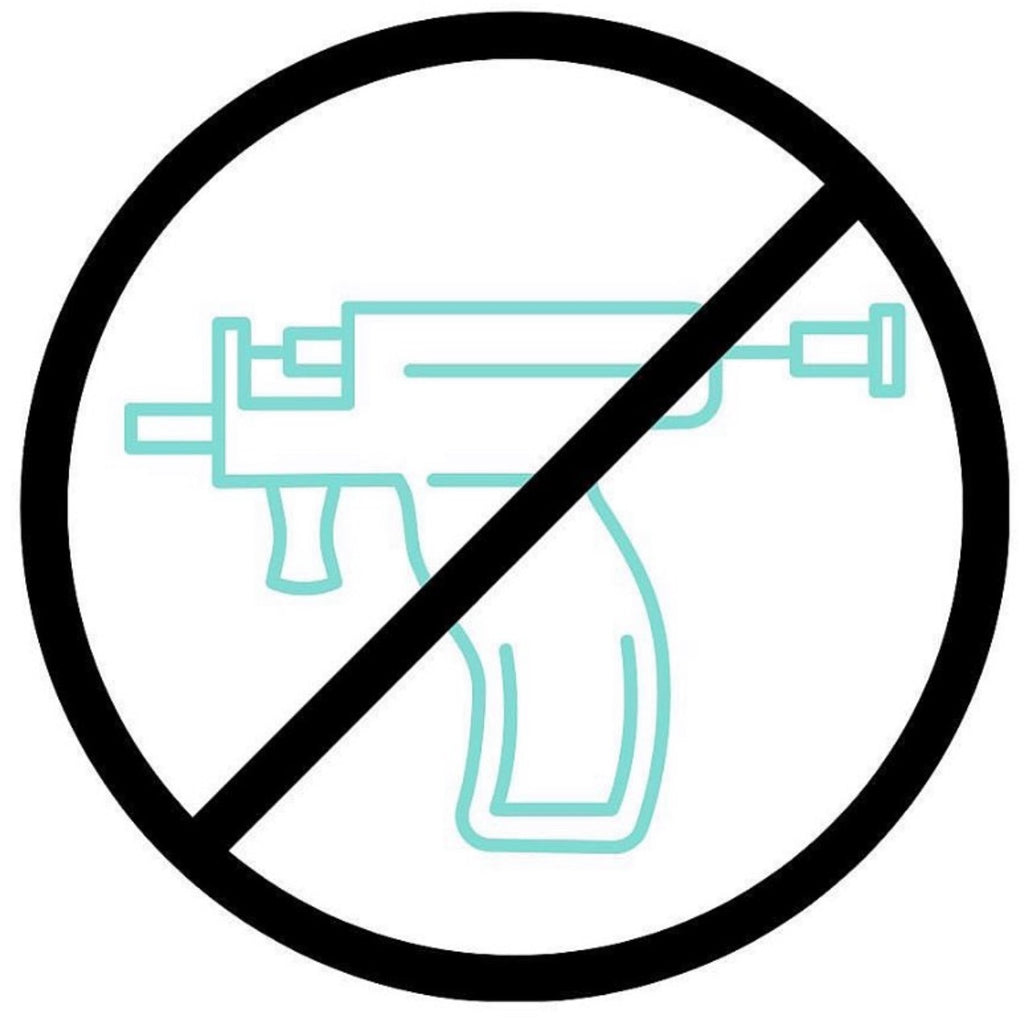Why We Don’t Use Piercing Guns: The Hidden Dangers of Piercing Guns
Posted by KITIJA ZAKITE

When it comes to getting a piercing, your safety should always come first. While piercing guns may seem like a quick and convenient option, the reality is far more alarming. Piercing guns are dangerous, and here’s why we refuse to use them in our studio. If you’re serious about your health and your piercing, understanding the risks of piercing guns is crucial.
What Are Piercing Guns?
Piercing guns are handheld devices that use spring-loaded mechanisms to force a stud through the skin. They are often used in mall kiosks or non-professional environments for ear lobe piercings. However, the simplicity of the device doesn’t equate to safety or quality.
Why Are Piercing Guns Dangerous?
Piercing guns might seem harmless, but they come with significant risks. Here are the key dangers associated with them:
1. Blunt Force Trauma
Piercing guns use brute force to push a dull stud through the skin, essentially tearing the tissue rather than cleanly cutting it. This can lead to:
- Excessive swelling
- Increased pain
- Longer healing times
2. Lack of Sterility
Most piercing guns cannot be fully sterilized because they are made of plastic and have complex parts. This increases the risk of:
- Infections due to cross-contamination.
- Exposure to bacteria from previous uses.
3. Inaccuracy and Poor Technique
Piercing guns lack precision, often leading to uneven placement. Professional piercers use sterile, single-use needles to ensure accurate placement and minimal trauma.
4. Unsuitable for Certain Areas
Piercing guns are not designed for cartilage or other areas beyond the earlobe. For cartilage, the blunt trauma can cause:
- Shattering of cartilage
- Permanent deformities
Why We Only Use Needles
Needles are the gold standard for piercing, offering unmatched safety, precision, and healing benefits. Here’s why we exclusively use them:

1. Precision and Safety
Needles create clean incisions, minimizing tissue damage for:
- Less pain and trauma
- Faster healing
- Accurate placement tailored to your anatomy.
2. Sterile and Single-Use
Needles are individually packaged, sterilized, and discarded after use, eliminating the risk of cross-contamination.
3. Suitable for All Piercing Types
From earlobes to cartilage and more intricate areas, needles adapt to any piercing location safely.
4. Healing-Friendly
The clean cut of a needle reduces swelling, scarring, and infections, promoting faster, smoother healing.
5. Personalized to You
Unlike piercing guns, needles allow piercers to consider your unique anatomy, ensuring the perfect placement for comfort and aesthetics.
Myths About Piercing Guns
Many people believe piercing guns are harmless because they’re widely used. Let’s set the record straight:
-
“They’re faster and easier.”
Piercing guns may seem quick, but the long-term risks far outweigh any perceived convenience. The trauma caused by a piercing gun can result in complications that take much longer to heal. -
“It’s only for earlobes.”
Even earlobe piercings done with a gun can result in uneven placement, infections, and prolonged healing. Cartilage or other areas are even riskier. -
“They’re more painless.”
Many assume piercing guns are less painful because they’re fast. In reality, the blunt force trauma they cause often makes the piercing process more painful and leads to swelling and tenderness that lasts longer compared to the clean, precise cut of a needle. -
“They’re cheaper.”
While the upfront cost may be lower, you could end up spending more on treating infections or correcting poorly placed piercings.
Conclusion: Say No to Piercing Guns
Piercing guns are dangerous and outdated. From blunt force trauma to sterility concerns, the risks simply aren’t worth it. Needles, handled by experienced piercers, are the gold standard for safe, accurate, and hygienic piercings. Don’t gamble with your health - choose a professional studio that puts safety first.
